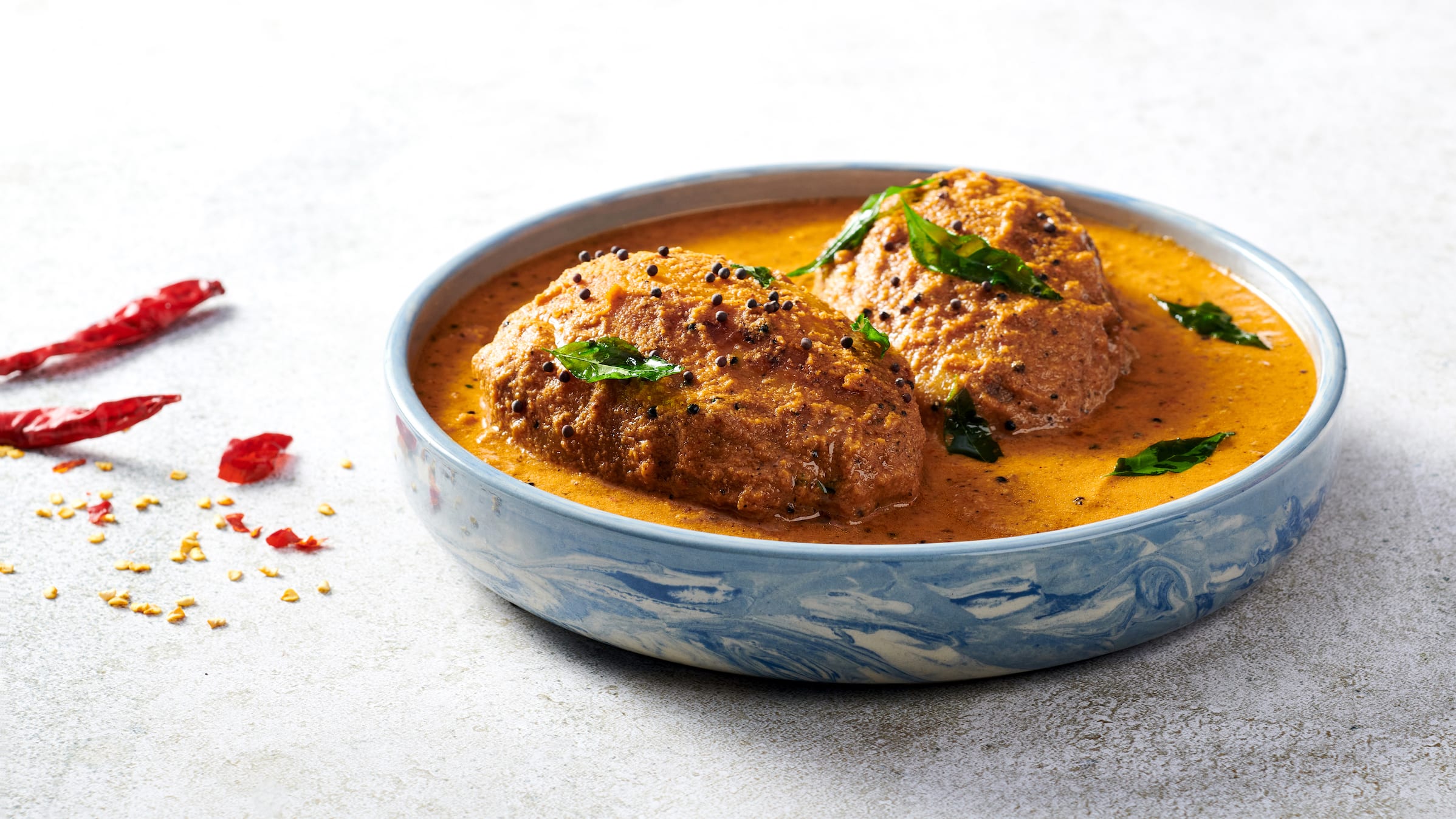Mangoes hold a special place in Goan cuisine, adding a tropical sweetness to many dishes. One such dish is Mango Sasav, a traditional Goan delicacy. It balances sweetness, tanginess, and spiciness, making it a perfect accompaniment to rice or chapatis. The dish is named after ‘sasav,’ meaning mustard in Konkani. The mustard seeds in the recipe give it a unique flavor that distinguishes it from other mango curries.
Ingredients:
- 4 small ripe mangoes (preferably Mankurad)
- 1 tablespoon mustard seeds
- 1 cup grated coconut
- 1 teaspoon turmeric powder
- 2 dried red chilies
- 1 tablespoon jaggery
- 1 teaspoon tamarind pulp
- 1 tablespoon oil
- ½ teaspoon salt
- 1 cup water
Method:
- Wash the mangoes thoroughly and peel them. Keep the peels aside as they add extra flavor to the curry.
- In a blender, grind the grated coconut, mustard seeds, turmeric powder, dried red chilies, and tamarind pulp into a smooth paste. Add a little water while grinding.
- Heat oil in a pan on medium flame and add the mustard seeds. Allow them to splutter, releasing their aromatic essence.
- Add the mangoes and their peels to the pan. Stir gently to coat them with oil.
- Pour the ground coconut-mustard paste into the pan and mix well. Ensure the mangoes are covered evenly with the mixture.
- Add jaggery and salt to balance the flavors. Stir again to combine all the ingredients properly.
- Pour water into the pan and allow the mixture to simmer for about 10 minutes. Stir occasionally to prevent sticking.
- Once the curry thickens and the mangoes soften, turn off the heat. Let it rest for a few minutes to absorb the flavors.
- Serve hot with steamed rice or chapati for a delicious Goan meal.
Why This Recipe Stands Out
Mango Sasav brings together the best of Goan flavors in a single dish. The sweetness of mangoes, the pungency of mustard, and the heat of red chilies create a harmonious balance. Jaggery adds an earthy sweetness that enhances the natural flavors of the mangoes. The coconut paste gives it a rich texture, making the curry creamy and delightful.
Best Mango Varieties for Sasav
Goa is known for its exquisite mango varieties, and the choice of mango impacts the taste of the dish. Mankurad is the preferred variety due to its rich sweetness and pulpiness. Other options include Pairi, Goa Mankur, or Malgova. Avoid using fibrous mangoes as they alter the texture of the curry.
Pairing and Serving Suggestions
Mango Sasav pairs well with steamed rice, absorbing the flavors of the mustard-infused curry. It also complements chapatis, offering a blend of sweetness and spice in every bite. Some people enjoy it chilled, as the flavors deepen when left to rest for a few hours.
Cultural Significance
Mango Sasav is often prepared during the summer when mangoes are abundant. It is served during festive occasions and family gatherings, celebrating the love for seasonal produce. This dish showcases Goan culinary traditions, preserving age-old recipes passed down through generations.
Tips for a Perfect Mango Sasav
- Use ripe mangoes that are not too soft to maintain their shape in the curry.
- Adjust jaggery and tamarind according to the sweetness of the mangoes.
- Avoid overcooking to retain the freshness of the ingredients.
- Let the curry rest before serving for enhanced flavor infusion.
Conclusion
Goan Mango Sasav is a dish that highlights the tropical richness of mangoes with the boldness of mustard and chilies. It is easy to prepare, requiring minimal ingredients while delivering maximum flavor. Whether enjoyed as part of a festive meal or a simple home-cooked lunch, Mango Sasav brings joy to every plate. Try this recipe and experience the magic of Goan cuisine.


